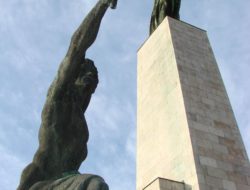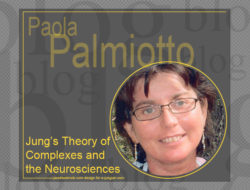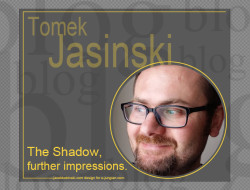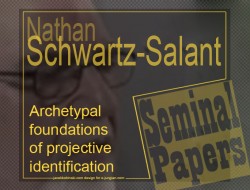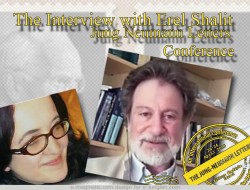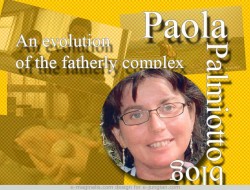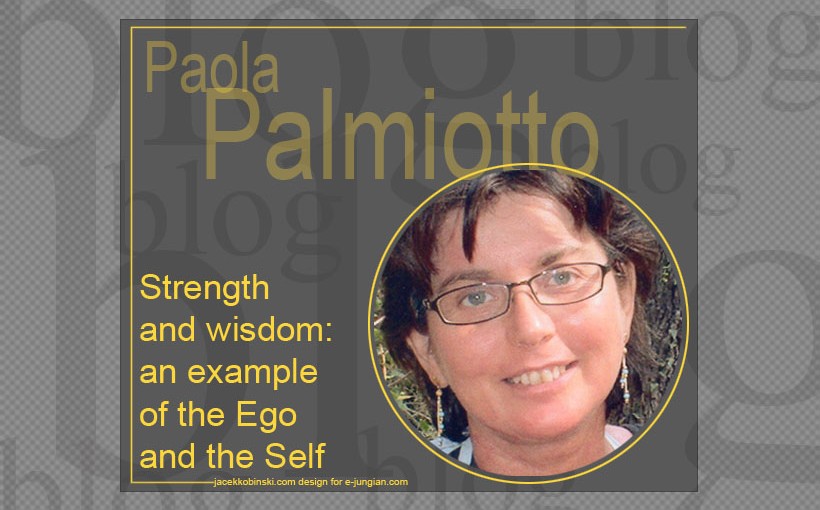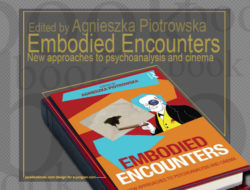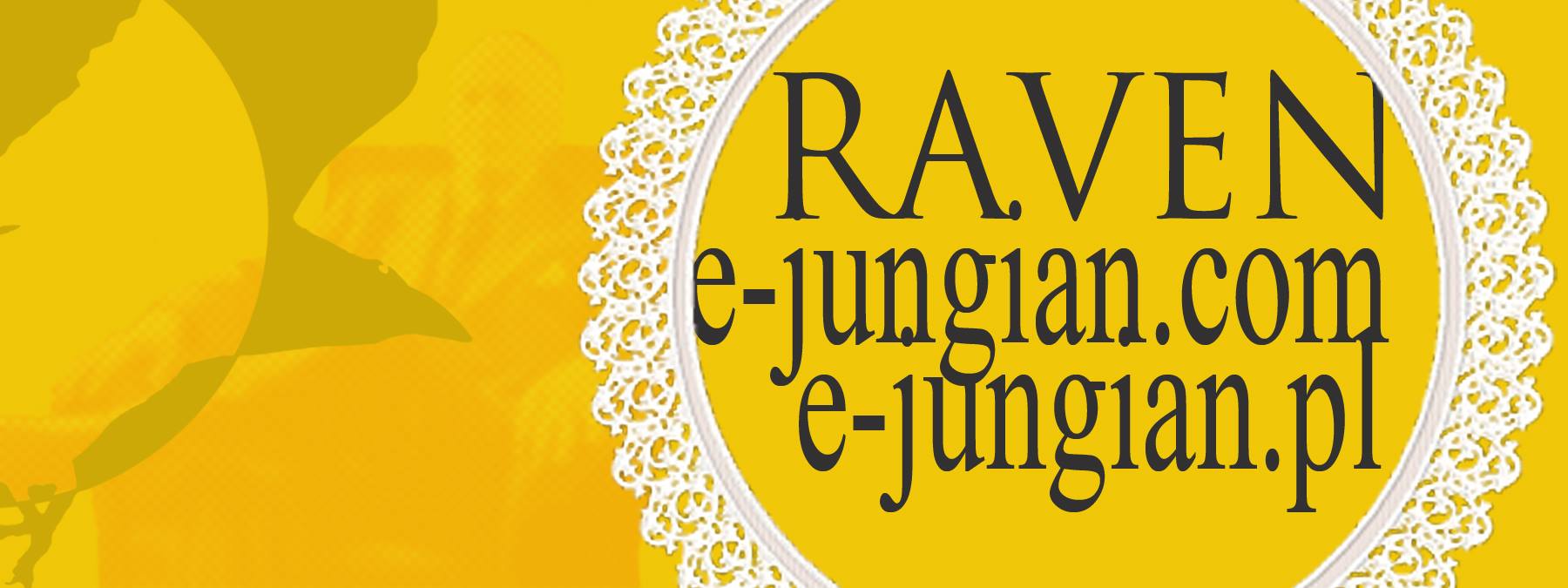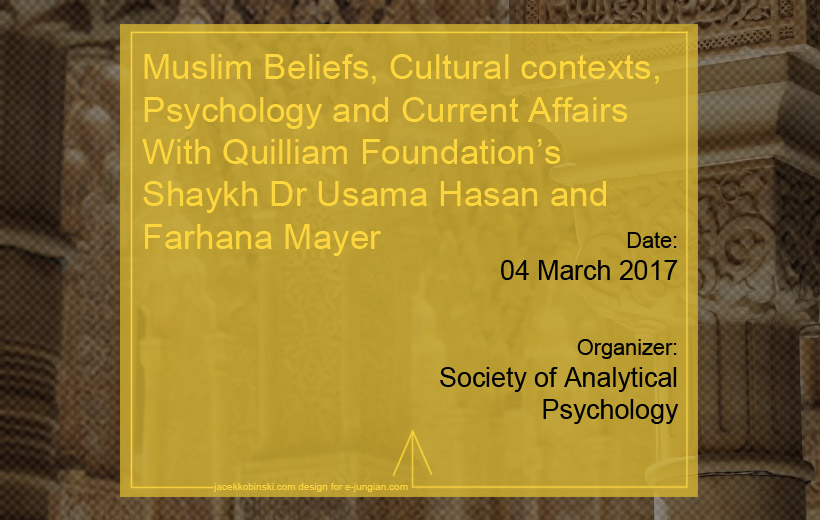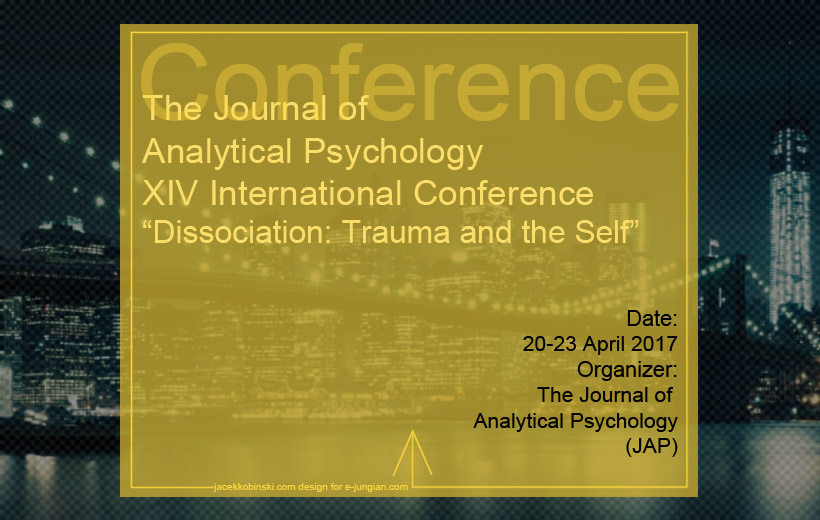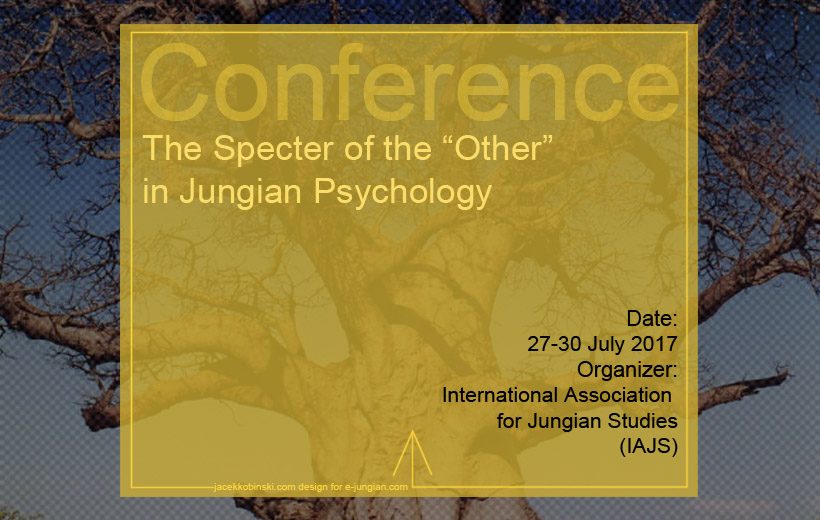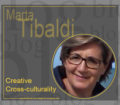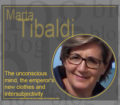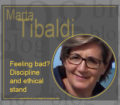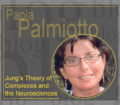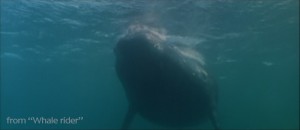 The Self for Jung is “the unity of personality as a whole, in so far as psychic totality consisting on both conscious and unconscious contents, it encompasses both the experienceable and the inexperienceable (or the not yet experienced).” [1]
The Self for Jung is “the unity of personality as a whole, in so far as psychic totality consisting on both conscious and unconscious contents, it encompasses both the experienceable and the inexperienceable (or the not yet experienced).” [1]
“By Ego I understand a complex of ideas which constitutes the centre of my field of consciousness and appears to possess a high degree of continuity and identity. … I therefore distinguish between the ego and the self, since the ego is only the subject of my consciousness, while the self is the subject of my total psyche, which also includes the unconscious. In this sense the self would be an ideal entity which embraces the ego.” [2]
While I was preparing to write this paper, long and hard I thought about verbs that could best express ‘being in syntony with the Self’: perceive, communicate, contact, be in tune with… Eventually I realized that there are no suitable verbs, because it is a process that includes also something we do not know, something that cannot be described with words. We get to sense this in retrospective, with images, feelings or memories that come to us. But trying to describe it would be like struggling to shape water. You cannot do this. As an example of the Ego and the Self I would suggest to see the 2002 movie called Whale Rider by Niki Caro. It is based on the same title novel by Witi Ihimaera. I’m quoting excerpts from the movie, selected and arranged by a theme.
It is the story of Paikea, a Maori girl, descendant of a long line of leaders, and how her grandfather Koro has not been able to recognize her identity. It is the story of a senex [3] and puella.
The legend
“In the old days, the land felt a great emptiness. The land was waiting. Waiting to be filled up. Waiting for someone to love it. Waiting for a leader. And he came on the back of a whale. A man to lead a new people. Our ancestor – Paikea. But now we were waiting for the first-born of the new generation – for the descendant of the Whale Rider. For the boy who would be chief.” [4]
The pain
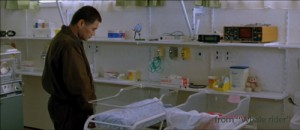 Koro is the leader of the Maori community and is waiting for the birth of the eldest grandson, the predestined, the one who will be his successor… “someone who will lead our people out of the darkness and make everything all right.”
Koro is the leader of the Maori community and is waiting for the birth of the eldest grandson, the predestined, the one who will be his successor… “someone who will lead our people out of the darkness and make everything all right.”
Two twins are born, a boy and a girl, but the mother and the boy die. Paikea (the surviving twin) says: “There was no gladness when I was born. My twin brother died and took our mother with him. … Everyone was waiting for the first-born boy to lead us, but he died. … And I didn’t.”
Koro mourns over his stillborn grandson and he says to his wife, pointing his granddaughter: “Take her away”.
Koro
 Later, when he decided to start the sacred school for the choice of the new leader, Koro said to his wife: “It’s time they learnt. … When she was born, things went wrong for us.”
Later, when he decided to start the sacred school for the choice of the new leader, Koro said to his wife: “It’s time they learnt. … When she was born, things went wrong for us.”
Pai (Paikea): “My Koro wished that I’d never been born… but he changed his mind.”
The conflict
There is a strong conflict between Koro and his son Porourangi. When Koro rushes to the place of birth, he asks only about the boy. He is interested only in that. And when his son tells him that the baby will be named Paikea (Pai), he protests in a horrified way „No, not that name.”
After the tragic event Porourangi goes away, leaving the child to her grandparents. He also leaves the waka (canoe) that he was building unfinished. He comes back rarely and for short periods of time. Once, when Porourangi is back, another confrontation with his father takes place: “Look at me, Dad. For once in your life go on…. You don’t even know who I am.”
And Koro answers: ““I know who you’re meant to be. Who you were born to be.”
When Porourangi says: “I won’t let you treat her like that.”
Koro roars: “Then take her with you if you don’t like the job I’m doing! Take her!” She’s no use to me.”
Hearing her grandfather Pai runs away into the evening. Her father joins her to comfort her.
Pai: “Why doesn’t he want me?”
Porourangi: “Oh Pai, it’s not you. It’s not even about you. Koro is just … He wants something that doesn’t exist. … In his head he needs a prophet. Someone who will lead our people out of the darkness and make everything all right.”
Pai: “Like my brother?”
Porourangi: “Yeah, Koro made himself believe so strongly that he was the one.”
Pai: “Is that why he’s so hard on you?”
Porourangi: “Yup. Pretty much. Because I can’t be what he wants.”
Pai: “Me neither.”
Koro knows the having to be. The senex doesn’t see his son for what he is, but only as he should be and so he does with her granddaughter.
The art of being a leader
Koro decides to start a school to become chief for the kids in the community. Pai herself sits to attend but Koro tells her that since she is a female, she has to stay in the back. Pai does not agree to stay in the back, she stays in the front row, defying her grandfather, who therefore expels her from the school.
Koro teaches kids how to fight with the Taiaha (stick fight), and how important it is to learn to respect it. In secret from Koro, Pai is also trying to learn how to use the Taiaha. But once he discovers her fighting with Taiaha, Koro scolds her harshly for breaking the sanctity of the school and Pai apologizes to him. But Koro says: “You’re not sorry. From the beginning you knew this wasn’t for you, but you keep coming back. Do you want me to fail?”
Koro projects his difficulties on Pai ‘You want me to fail’.
The grandmother
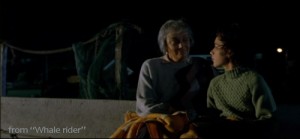 The grandmother always tries to protect Pai from Koro’s hardness. She is a determined woman, who is not intimidated by the rigidity of her husband. When Pai asks: “What’s wrong with me, Nanny?”, she encourages and supports her, also suggesting an alternative to Koro’s school. To reduce the conflict between Pai and Koro, grandmother tells Pai of her uncle Rawiri as a possible master of Taiaha. So Pai, unbeknownst to Koro, goes to Taiaha school at her uncle Rawiri.
The grandmother always tries to protect Pai from Koro’s hardness. She is a determined woman, who is not intimidated by the rigidity of her husband. When Pai asks: “What’s wrong with me, Nanny?”, she encourages and supports her, also suggesting an alternative to Koro’s school. To reduce the conflict between Pai and Koro, grandmother tells Pai of her uncle Rawiri as a possible master of Taiaha. So Pai, unbeknownst to Koro, goes to Taiaha school at her uncle Rawiri.
The whale’s tooth
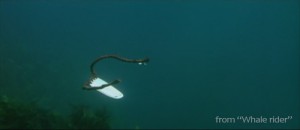 Koro tells the pupils at school: “You’ve all done very well. You’ve shown that you have got courage, that you are strong and that you can learn. But there can only be one, so there is one final test. A test of your spirit. If you have the tooth of a whale, you must have the whale’s jaw to wield it. One of you will bring that back to me.” But no one bring the whale’s tooth and Koro realizes that he failed. He shuts into a deep depression and does not get out of bed. The senex without the energy and vitality of the puer dries up and no longer makes sense.
Koro tells the pupils at school: “You’ve all done very well. You’ve shown that you have got courage, that you are strong and that you can learn. But there can only be one, so there is one final test. A test of your spirit. If you have the tooth of a whale, you must have the whale’s jaw to wield it. One of you will bring that back to me.” But no one bring the whale’s tooth and Koro realizes that he failed. He shuts into a deep depression and does not get out of bed. The senex without the energy and vitality of the puer dries up and no longer makes sense.
Pai is brought by her uncle to the place where Koro threw in the whale’s tooth.
Pai: “I’ll get it.” While she descends to the bottom of the sea Pai thinks: “It’s quiet down deep. Koro needed quiet – that’s what Nanny said. He didn’t want to talk anymore. He just wanted to go down and down.”
Koro sings the song of the ancestors. Pai thinks to herself: “He was calling to the ancient ones, asking them for help. But they weren’t listening. So I tried, and they heard me.”
Praying to the ancestors can be read as a way to get in syntony with the self, probing the unknown, to find an answer. Koro has lost this ability, he is no longer able. The image of the whale’s tooth that slowly sinks and leans on the bottom of the sea aptly conveys the loss of the concept of harmony with the self. The ego becomes barren, lifeless, nothing makes more sense: depression begins. Like a tree that can no longer feed with its roots from the resources of unconscious.
The story
At the school recital the teacher presents the story which is the most beautiful story not only in the school, but of all schools on the east coast: it’s the story written by Pai.
Pai is expressing strong ambivalence: on one hand she accepts the projections of his grandfather: “I was not the leader my grandfather was expecting and by being born I broke the line back to the ancient ones.” But then she wisely says: “It wasn’t anybody’s fault. It just happened. We can learn, and if the knowledge is given to everyone, we can have lots of leaders, and so everyone will be strong, not just the chosen ones.”
On the other hand Pai also says how “sometimes even if you’re the leader and need to be strong, you can get tired…”, tired of all the expectations that there may be. It is the same ambivalence in which she has grown. On the one hand, the lack of acceptance from her grandfather. Onthe other hand, she feels what her grandfather is no longer able to feel. “He was calling to the ancient ones, asking them for help. But they weren’t listening. So I tried, and they heard me.”
The whales
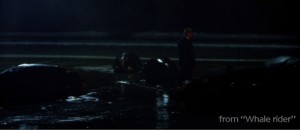 Koro sees some whales on the beach and he asks himself: “Who is to blame?”
Koro sees some whales on the beach and he asks himself: “Who is to blame?”
Pai says to herself: “I called them and they came. But it wasn’t right. … They were dying. … Koro knew what it meant. It was Paikea’s whale. Sent to us because we were in trouble.”
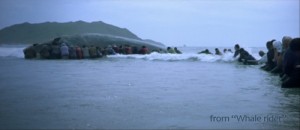 Koro and the whole community is engaged in trying to move the whale pack leader by turning it, so that the others would follow. Koro: “We’ve got to turn it round. Get a tractor, some ropes. We wait for the tide. If we can move it, the others will follow.”
Koro and the whole community is engaged in trying to move the whale pack leader by turning it, so that the others would follow. Koro: “We’ve got to turn it round. Get a tractor, some ropes. We wait for the tide. If we can move it, the others will follow.”
Pai: “It was a test. But for Koro this time.” And once again Koro thinks that Pai cannot help him and he says: “Leave it. You’ve done enough.”
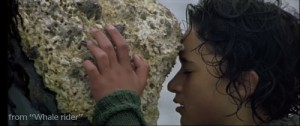 But despite all the efforts, the tractor and everybody pulling together, the rope breaks and the whale remains still. Pai thinks about the whale, she says: “She wanted to die. There wasn’t a reason to live anymore.”
But despite all the efforts, the tractor and everybody pulling together, the rope breaks and the whale remains still. Pai thinks about the whale, she says: “She wanted to die. There wasn’t a reason to live anymore.”
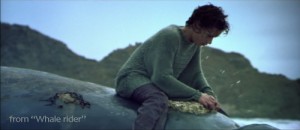 And when all go away, giving up to defeat, Pai approaches the whale and begins to touch her to seek harmony. Slowly, carefully, like when you get close to something of which you must have enormous respect, she tries to feel, to understand, to grasp, and begins to climb up to get astride the whale. She says: “Come on.” And it is the miracle: the whale moves, slowly turns around and heads into the sea, while all the others follow. While Pai is riding the whale she says to herself: „It’s OK, Paka” (grandfather).
And when all go away, giving up to defeat, Pai approaches the whale and begins to touch her to seek harmony. Slowly, carefully, like when you get close to something of which you must have enormous respect, she tries to feel, to understand, to grasp, and begins to climb up to get astride the whale. She says: “Come on.” And it is the miracle: the whale moves, slowly turns around and heads into the sea, while all the others follow. While Pai is riding the whale she says to herself: „It’s OK, Paka” (grandfather).
This is the trial of Koro. Pai has succeeded where Koro has failed. Being in syntony with the Self, sometimes the unthinkable does happen, what an entire community has failed to do. The strength and wisdom, the ego and the Self. When the ego loses harmony with the self, you can use the tractor and all the people in the community but things won’t succeed, won’t flow, there would always be something that jams it all.
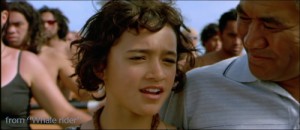 At this point the grandmother brings Koro the whale’s tooth that Pai found in the sea. Koro is now ready to understand, finally he sees what he had always kept in the shadow, what he has always believed to be the cause of ‘when things went wrong for us’. The half-finished canoe , abandoned “when things went wrong”, can now be finished. The whole community drives it into the sea, and all together they can row.
At this point the grandmother brings Koro the whale’s tooth that Pai found in the sea. Koro is now ready to understand, finally he sees what he had always kept in the shadow, what he has always believed to be the cause of ‘when things went wrong for us’. The half-finished canoe , abandoned “when things went wrong”, can now be finished. The whole community drives it into the sea, and all together they can row.
The senex and puella recognized one another. The community is a whole and may face the sea with courage.
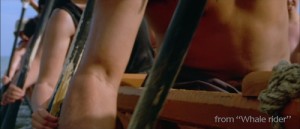 With a voiceover Pai comments on the community’s canoe being driven into the sea: “My name is Paikea Apirana. And I come from a long line of chiefs stretching back from the whale rider. I’m not a prophet, but I know that our people will keep going forward – all together with all of our strength.”
With a voiceover Pai comments on the community’s canoe being driven into the sea: “My name is Paikea Apirana. And I come from a long line of chiefs stretching back from the whale rider. I’m not a prophet, but I know that our people will keep going forward – all together with all of our strength.”
Reflections
Ultimately, the job of the psychotherapist is just to create syntony between the patient’s ego and his self. When parts of the unconscious got stuck on the beach, you have to work to ensure that they take back into the open sea, so that the syntony between the patient’s ego and these unconscious contents, split, removed or denied, is recreated.
Of course it is important to approach this with great humility, as when you have to take on a trip with the sailing boat. One must scan the horizon, the wind, the sky, to choose the right moment. We must avoid departing when there is a storm. We must stay there to wait for the forces of nature to calm down. We are dealing with something very powerful and potentially overwhelming if we do not proceed cautiously.
And this is another important point. Caution is essential, because otherwise you risk to be overwhelmed by all that energy. Pai has returned from her ride on the whale. But unless you are cautious, you could be overwhelmed by the whale and of not being able to come back. Jung speaks of inflation of the Self [5,6].
If we interpret this beautiful story as if it were a dream, and as if the characters were parts of the dreamer, we can think of Koro as the senex and Pai as the puella. The senex, who lost his harmony with the vital forces of the unconscious and regeneration is stiffed in waiting for the predestined. He does not see what is around him, does not see the child, does not see Pai.
And when none of the kids bring back the whale’s tooth and he understands that he has failed, the syntony with the self is lost. The whales get stranded on the beach. So Pai, the puella, indicates the way, not by force but by accordance with the Self, which is able to „make everything all right” and give back vitality to the community. Now it’s possible to row all together. All the parts are integrated.
Paola Palmiotto
© 2015 Paola Palmiotto – All rights reserved
* All pictures from the movie „Whale Rider” by Niki Caro, 2002
[1]. Jung, C.G. (1921). Psychological Types, CW 6, par. 789. Princeton: Princeton University Press.
[2]. Jung, C.G. (1921). Psychological Types, CW 6, par. 706. Princeton: Princeton University Press.
[3]. Hillman, J. (2006) Senex and Puer, Uniform Edition vol. 3, Spring Publications.
[4]. All movie quotations from: Whale rider by Niki Karo 2002)
[5] Jung, C.G. (1928). “The relations between the Ego an the Unconsious”. In: Two Essays on Analytical Psychology, CW7, Princeton: Princeton University Press.
[6] Jung, C.G. (1951). Aion. Resarches into the phenomenology of the Self, CW 9ii. Princeton: Princeton University Press.
Tags: ego, maori, Movie analysis, Paola Palmiotto, the self

